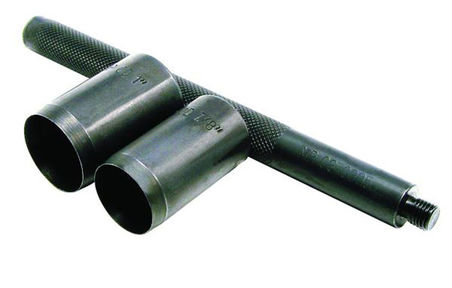 Click on image for an eBay listing. Click on image for an eBay listing. This tool from Motion Pro is an answer to a problem I've had for years. It's called a Grip End Cutter and it does exactly that — cuts the ends off of closed-end handgrips. Many of the aftermarket handgrips that I like are only available with closed ends, but our VFRs, of course, require open ends in order to allow for the weighted bar ends. I stumbled across this simple and effective tool last month and just had to add it to the tool box. 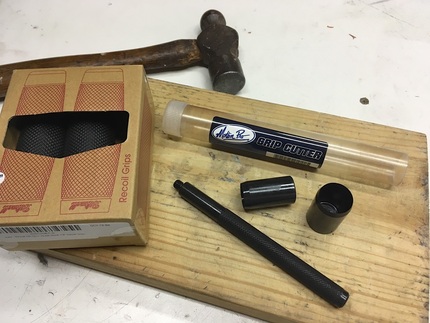 The tool consists of a knurled shaft with two threaded cutters — 1-inch and 7/8-inch. A handy storage tube is included. Here I'm about to cut the ends from my favorite grips; Recoil by Biltwell. These grips are barrel shaped, which fit my hands better than typical firm, flat sport bike grips, and they have a soft and grippy feel. In the past I've simply hacked the ends off with a razor blade as best I could, but a clean cut is virtually impossible. 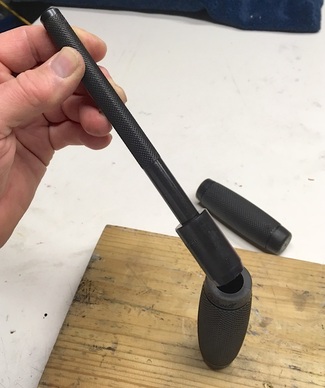 This is a quick and simple operation. Assemble the appropriate cutter, insert fully to the very bottom of the grip and strike with a BFH on a soft wood surface. Push the tool through the grip to extract the plug. 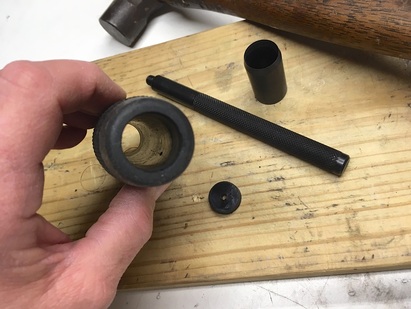 The cut is clean and flush with the grip's inside surface. A great idea, well-executed. This tool opens up a huge variety of handgrip choices. $24 from several eBay vendors. 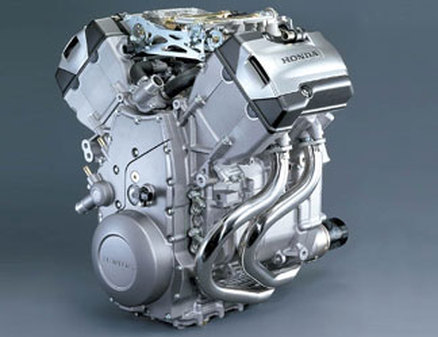 Honda's dream of V4 dominance extended beyond the sport bike and racing arenas. In 1990, alongside the all-new 3d-gen VFR, the company unveiled their fresh take on the large-displacement sport-touring segment, the ST1100. A completely different engine as compared to the VFR-series, this one was built for heavy-bike duty and mounted longitudinally. Already ahead of the full-sized touring pack with the iconic Gold Wing, Honda probably saw Kawasaki's success with their Ninja-based Concours (1986) and thought they could do one better. Slotted just below the Gold Wing, the ST would be lighter and nimbler, catering to the rider who didn't need or want the bulk of the Wing. All the makers eventually joined in, expanding the popular sport-touring genre we still enjoy today. After 11 years the ST1100 was overdue for an overhaul and the ST1300 was born for 2002. The engine had grown a bit and counter balancers added to allow the engine to be bolted directly to the frame, acting as a stressed member. This was effectively Honda's first use of fuel injection on a large-production model. The engine enjoyed a long run through about 2012 (police edition) in the ST series and was then retuned and used in the CTX1300, a bagger model. Here's some specs for the engine as used in the ST1300: • 1261cc, 71ci • 90-degree V4 • 4-valve, chain driven cams • Programmed Fuel Injection • Bore/stroke = 78x66mm • Compression = 10.8:1 • HP = 117 @ 8000 rpm (U.S.) • Torque = 86 lb-ft @ 6500 rpm (U.S.) 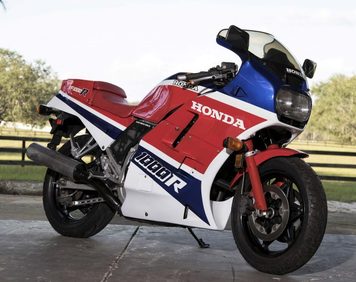 SOLD — $5000 Recently sold on eBay at its reserve price with a single bid is this 1986 VF1000R. The bike's in very passable cosmetic condition with a few repairs and sports only 4122 miles. It was located in Clermont, FL. This example has most of the maintenance brought up to date, but is still in need of fresh tires and a fork cleaning. The bike appears very original, including the all-important mufflers. A fair price for both parties for this original survivor. 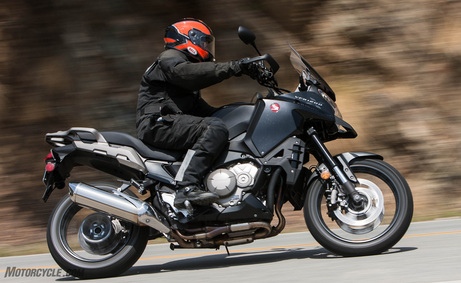 Click on image for the eBay link. Click on image for the eBay link. What: 2016 VFR1200X Where: Littleton, Colorado Why: New, warranty, nice price Price: $11,988 Leftovers are a smart way to get a new, fully warranted vehicle, especially when nothing but the color has changed with the new model. Now two model years old, this 2016 is available for $4000 off MSRP. Still not cheap, but cheaper. This bike has the non-DCT standard 6-speed transmission. 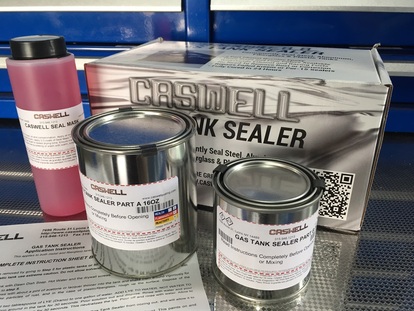 My trials and tribulations with VFR projects have included lots of fuel tanks in varying states of...ahh...despair. They're all the same relative age, so their condition is a reflection of how they've been cared for over the decades. I've come across tanks which look great on the ouside but heavily rusted internally, and just the opposite. But, it's like a Realtor likes to say about waterfront property, "they ain't makin' any more," so these tanks are worth saving, and that's where tank sealant comes in. My choice for do-it-yourself tank sealant is Caswell"s motorcycle sealing kit. This kit runs $40 for clear and $55 for colored. Both are a 2-part epoxy with some pretty fancy chemists' terms associated with it (i.e. "phenol novolac is more thixotropic") but the bottom line is that Caswell claims it sticks better, even to uneven rusty surfaces and is resistant to anything short of a nuclear detonation. It will bridge and seal up actual gaps and is pretty easy to work with. Pictured above is another product I like to use on tanks with a salvageable exterior finish; Seal Mask. This pink liquid brushes on the painted finish and protects during the cleaning and application process. Pretty amazing stuff, 'cause it washes off with only clear water when finished. Caswell provides written instructions with the kit and on their website. 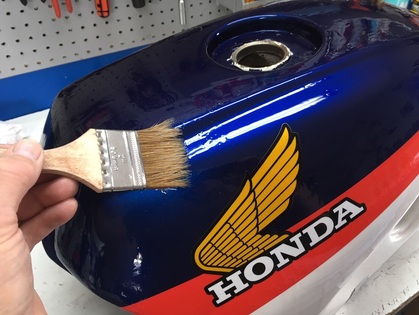 If the paint is to be saved, I first brush on one or two coats of Seal Mask, which dries in about 30 minutes to a thick plastic film. Caswell also suggests taping plastic and aluminum foil over the tank, but I've not found that necessary if you're careful. Or, use that approach in lieu of Seal Mask.  Our first task is to prep the inside of the tank as best we can. Remove the petcock; you'll need to "back blow" compressed air through the openings after sealing. I install the lower fuel level sensor with its rubber gasket and tape the top filler hole or just close the filler if it's still in place. Using acetone, I slosh about a pint of it around the interior with a double handful of small drywall screws, drain out the bottom hole, and repeat as needed. This photo shows what typically comes out of a rusty tank. The putrid smell of rancid gas can permeate a garage for a few days — be warned. When I'm happy with the cleaning operation I open up both holes and allow the tank to completely dry for a couple of days. 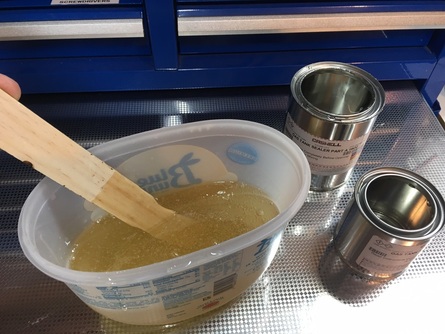 Next we need to mix the 2-part epoxy in a plastic container. Working time is dependent on air temperature, but basically be ready to pour into the tank immediately after mixing. Shown here is the clear sealant. Pour the very thick mixture into the filler opening (with the bottom opening taped over), tape the filler opening, and slowly rotate the tank to distribute on all surfaces. When I'm satisfied that everything's coated, uncover the lower hole and prop the tank level allowing it to drain for a couple of hours. I tape down some plastic, like a grocery bag, under the the opening and allow the drained glob to solidify on it. Immediately after beginning the drain operation blow compressed air into the fuel pickup tubes (at the petcock) to clear potentially clogged pickup screens inside the tank — don't skip this step. After about an hour, I'll take a sharp blade and cut off any drips around the drain hole. Caswell suggests allowing the tank to sit a few days undisturbed to cure the epoxy. 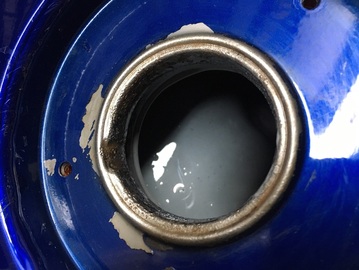 Here's a look at a cured tank interior, in grey. 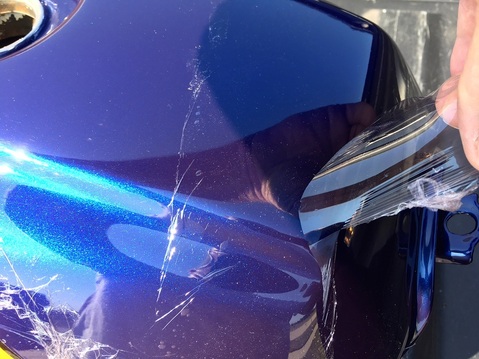 After curing, peel away the Seal Mask, or just clean with water. Reassemble your refurbished fuel tank and add gas. Job done! 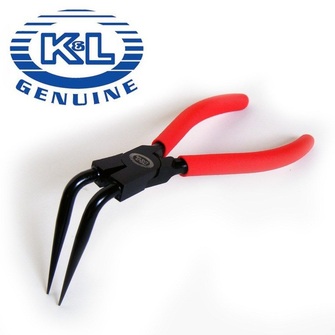 Click on image for an eBay link. Click on image for an eBay link. Internal circlips are simple and effective little devices, but they do require a special tool to install and remove. Over the years I've struggled with dirty, stubborn, corroded little clips in my bikes' master cylinders and forks using "universal" circlip pliers...until I discovered these bent-tip pliers from K&L. I now consider them a must-have in my tool collection. About $27 from various eBay sellers. Some time ago an astute reader suggested that it would be helpful if I could categorize some of the tips and maintenance projects I've covered over the past two and a half years. Good idea, so I've created an additional page called "Maintenance" where I'll include anything that might help y'all find some of that information.
I've begun adding some items, which will continue as time permits. I hope this is a useful change. 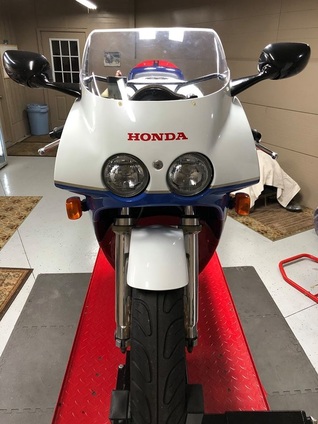 Click on image for the Facebook link. Click on image for the Facebook link. I first heard about Deftone Cycles on RareSportBikesForSale (.com). This is a shop located in Cleveland, Ohio who have found a niche importing grey market bikes from Japan. Their trick is to offer their buyers a turnkey transaction; the bikes are imported, the paperwork sorted and a valid U.S. title provided. Deftone has a steady stream of desirable JDM models passing through their doors. Case in point: this pristine RC30. It's a rare, first year, 1987 JDM model with distinctive small twin headlights, showing 23,299 miles. It was offered at $28,000 or best offer and was snatched up as soon as it hit the market, so the assumption is that the selling price was at or very near the asking. Lots of good reviews from past customers. I can't locate a website, but their Facebook page is pretty active. If you're in the market for something unique, Greg at Deftone is your guy. (click on images below for larger view)  Click on image for Craigslist link. Click on image for Craigslist link. What: 1995 VFR750F Where: Mill Creek, Washington (Seattle/Everett) Why: Awesome rebuild for a bargain Price: $2600 OBO UPDATE: SOLD Up front, this bike has a rebuilt title. If that's not an automatic deal-breaker for you, then read on. Our seller, a professional painter, has refurbished this bike from the ground up, finishing with a coat of gleaming black paint and retro white wheels. Every system has been dealt with — read his ad for a comprehensive list. The bike's been dyno'd and there's a cache of spares, some luggage and even a parts bike available. "I've poured blood, sweat and countless paychecks into this bike." I know the feeling, brother. |
THE SHOP BLOG
|
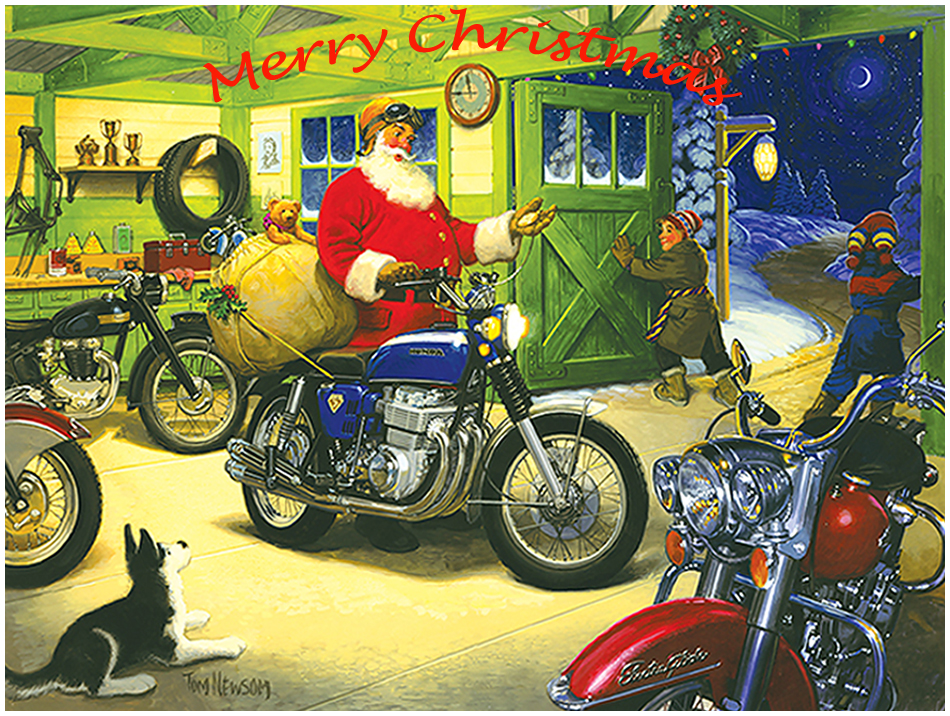

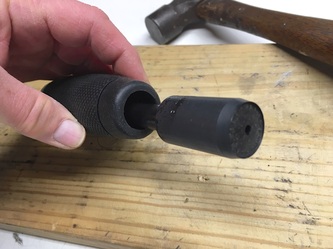
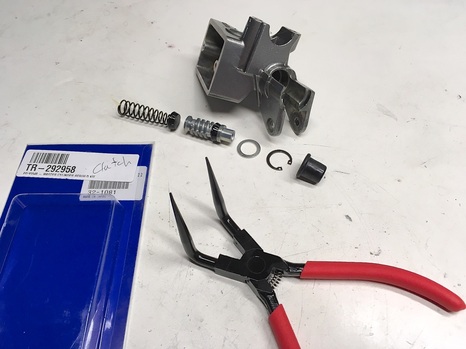


 RSS Feed
RSS Feed